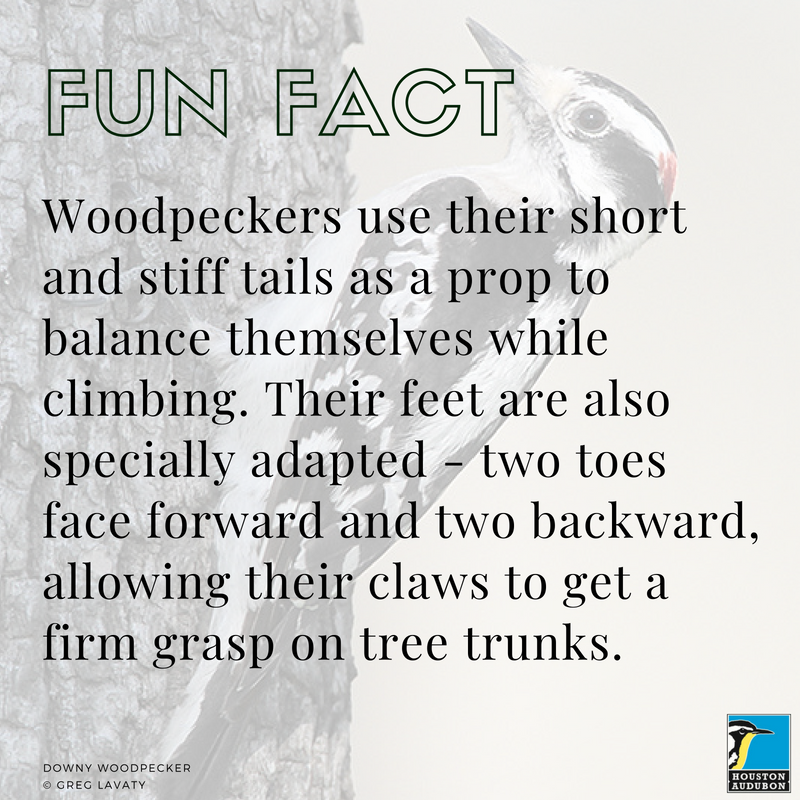Downy Woodpecker
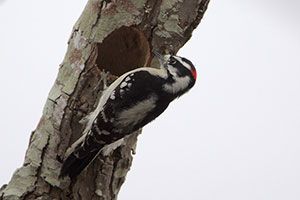
© Greg Lavaty
Picoides pubescens
Family: (Picidae) Woodpeckers
Profile by Glenn Olsen: The Downy Woodpecker is North America's smallest woodpecker. At approximately 6 3/4 inches and just under an ounce in weight it is only slightly larger than a Tufted Titmouse. These diminutive woodpeckers are permanent residents of our neighborhoods, local parks, and open woodlands throughout the Upper Coast.
Woodpeckers are the quintessential group of birds associated with trees. I think their Spanish name of Carpinteros embodies a fullness and sonority that is lacking in the English name. They are the carpenters of the bird world. Like other woodpeckers, the Downy nests and roosts in cavities that it excavates in small dead limbs of trees. The holes are used as homes to raise young, to sleep in at night (roost), and to seek shelter from inclement weather and even to escape some predators.
We can help the Downy by simply allowing a few dead limbs to remain on trees. Naturally, if the dead limb could easily fall on the house or a vehicle or present other danger, then it should be cut back to a safe length or removed. However, even a stub of a limb only about twelve inches in length and the diameter of a tangerine can provide a home for a Downy. This small stub does not present a real danger, so limbs could be cut back to this size for safety and to help a Downy. However, note that these small stubs are too small for our larger woodpeckers to use to excavate a cavity. Leave larger limbs and standing trunks of about 30 feet or more in height to help our other woodpeckers.
Like some other woodpeckers, the Downy feeds on insects which it searches for in trees and shrubs. Its small size and minimal weight allows it to feed on small branches, vines, shrubs, and at the tips of larger limbs. These small diameter limbs, stalks, and stems are generally too small for the larger woodpeckers to efficiently find food in so there is little direct competition with other species of woodpeckers. I have observed them searching for the larvae of gall wasps found in the bulbous stems (called a gall) of shrubs and small limbs of trees. We often use the word downy to indicate something that is delicate, soft, and light as a feather. What an appropriate name for our smallest woodpecker.
Invite Downy Woodpeckers to Your Yard!
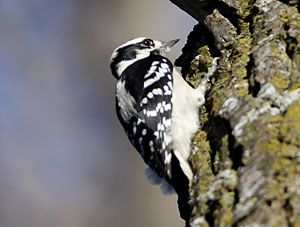
© David McDonald
If you have mature trees in your yard, you have good habitat for Downies. They rely on tall soft trees such as pines to excavate their nest cavities. Convert dead or dangerous trees to snags (20 feet or higher) which can be used for cavities. Downy Woodpeckers eat primarily insects; they readily visit suet and sunflower seed feeders.
Profile by Ryan Call: Perhaps the most common woodpecker in North America, the Downy Woodpecker thrives all across the continent: from the tree line in Alaska and Canada to the southernmost forests of California and Florida. In Houston, we can often hear this bird year-round, calling its rapid, descending, whinny call or drumming—in the spring, especially—on trees, wooden fences, and even the sides of our houses.
I think what excites me most about Downy Woodpeckers is this: I often observe these birds in mixed flocks during winter as they flitter through the trees along the walk near my house. I so often see them foraging with Carolina Chickadee and Tufted Titmouse; interestingly, a study by Sullivan in 1984 indicates that in these mixed flocks of greater than or equal to three birds, Downy Woodpeckers are more successful foragers!
Another fascinating behavior of Downy Woodpeckers is their courtship display. In the spring, you might be as fortunate as I was two years ago at Brazos Bend State Park to see the Downy Woodpecker’s Butterfly Flight, a courtship display that is “a flight characterized by holding the wings high and flapping them slowly and weakly like a butterfly, moving dancelike through open spaces between trees” as the male and female chase each other to and fro.
While they are excellent at finding insects on smaller branches and twigs, Downy Woodpeckers are also wonderful backyard birds and will eagerly come to feeders; they prefer suet and black-oil sunflower seeds. Look for these little friends throughout your neighborhood, in nearby parks, and along tracts of wood in the area. If you wish to go further to welcome them to your yard, do your best to allow dead limbs of seven inches in diameter to remain (if safely located) on nearby trees so that these diminutive woodpeckers can nest and feed without worry.
-
Cornell Lab of Ornithology
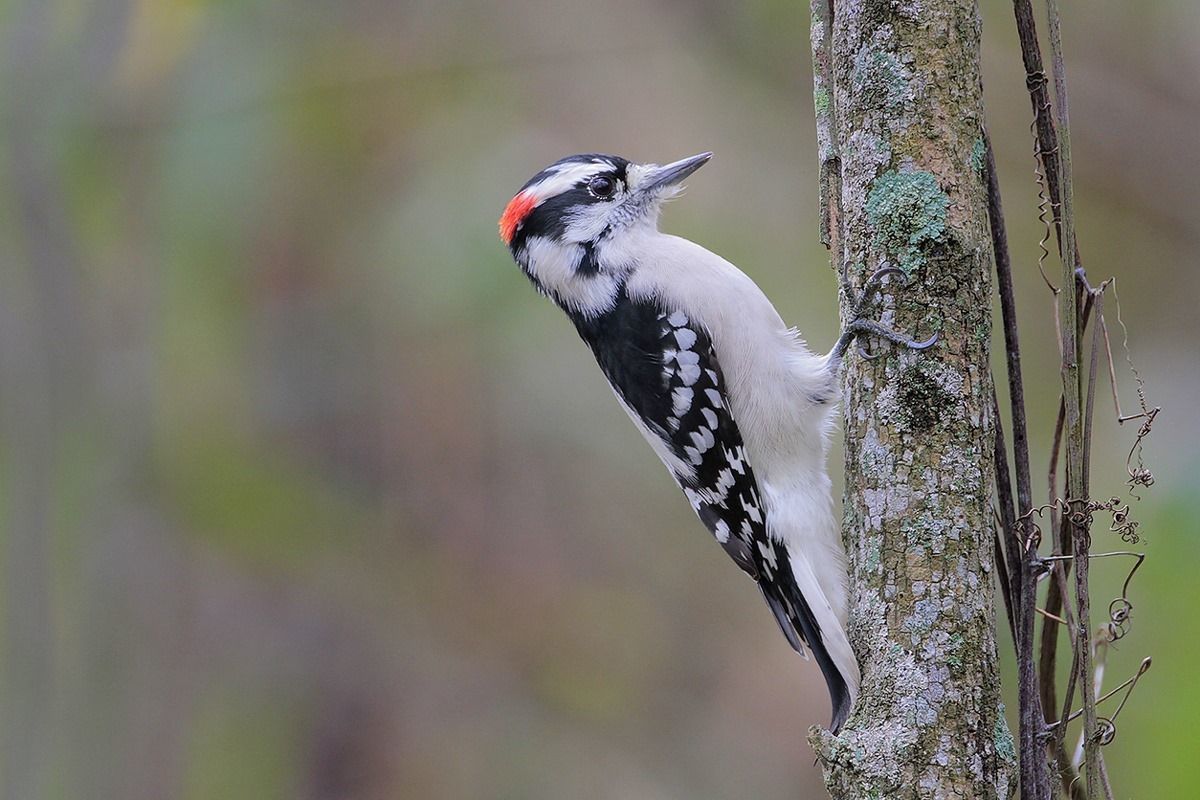
© Greg Lavaty, www.texastargetbirds.com
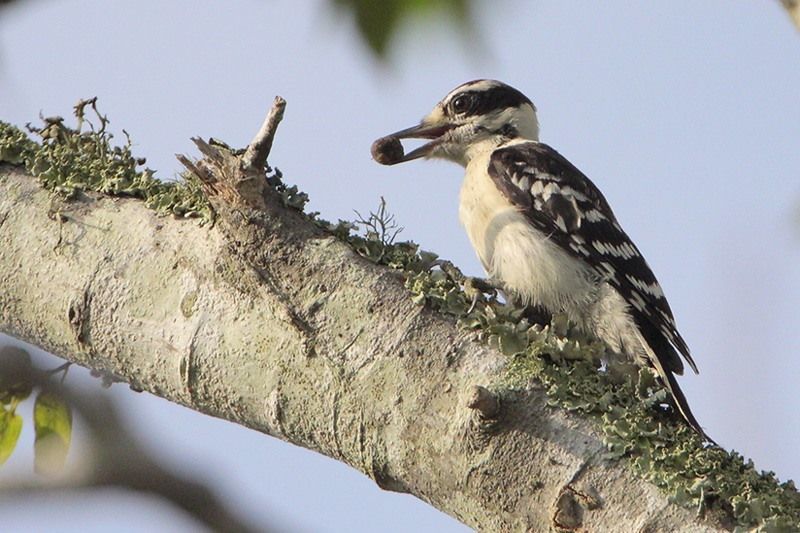
© Greg Lavaty, www.texastargetbirds.com

© Greg Lavaty, www.texastargetbirds.com
